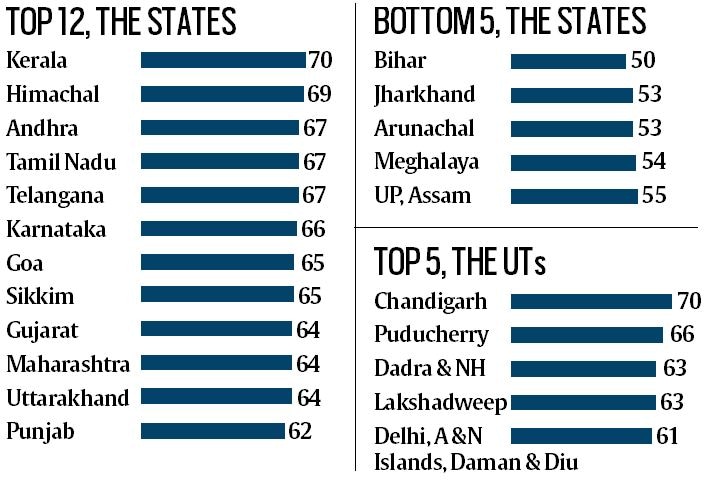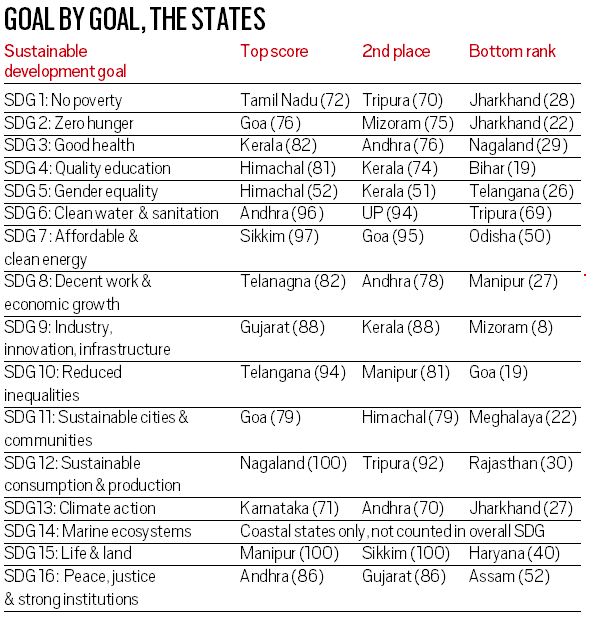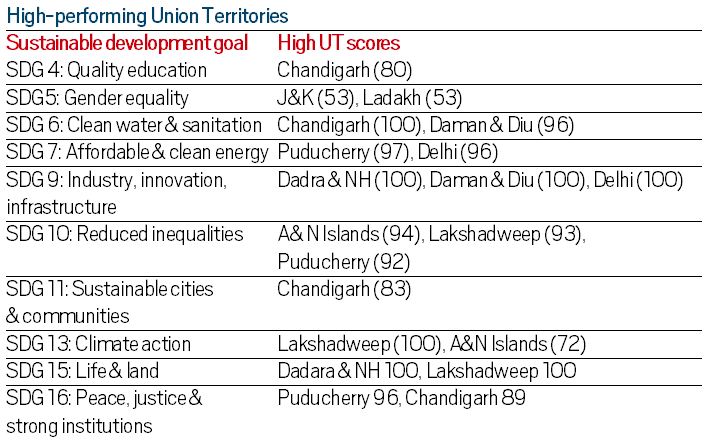Telling Numbers: How the states, UTs scored on various goals in SDG Index
Kerala is in the top slot with a score of 70, while Bihar is at the bottom with 50.
 Each of the 16 SDGs — ranging from good health to quality education, gender equality, and climate action — comprise several indicators, with the number of these varying from SDG to SDG.
Each of the 16 SDGs — ranging from good health to quality education, gender equality, and climate action — comprise several indicators, with the number of these varying from SDG to SDG.
NITI Aayog has released its latest SDG India Index 2019, which assesses each state and Union Territory’s achievement on 16 sustainable development goals (SDG). Kerala is in the top slot with a score of 70, while Bihar is at the bottom with 50.

Each of the 16 SDGs — ranging from good health to quality education, gender equality, and climate action — comprise several indicators, with the number of these varying from SDG to SDG. Scores are given for a state or UT on each SDG. The composite score for each state or UT is computed by aggregating their performance across these goals, and then by taking the arithmetic mean of individual goal scores. A score of 100 implies that the state/ UT has achieved targets set for 2030.

Among the 16 SDGs, marine ecosystems is for coastal states only, and scores on this one were not counted in the composite total. In the other SDGs, the best performers were Tamil Nadu for ‘no poverty’; Goa for ‘zero hunger’; Kerala for ‘good health’; Himachal Pradesh for ‘quality education’; Himachal again for ‘gender equality ‘; Andhra Pradesh for ‘clean water and sanitation’; Sikkim for ‘affordable and clean energy’; Telangana for ‘decent work & economic growth’; Gujarat for ‘industry, innovation and infrastructure; Telangana for ‘reduced inequalities’; Goa for ‘sustainable cities and communities’; Nagaland for ‘sustainable consumption and production; Karnataka for ‘climate action’; Manipur for ‘life and land’; and Andhra Pradesh and Gujarat for ‘peace, justice, strong institutions’.

Following Kerala’s composite score of 70, Himachal Pradesh took the second spot with a score of 69 while Andhra Pradesh, Tamil Nadu and Telangana shared the third spot with each scoring 67. There are eight states in the highest bracket, called frontrunners, with scores in the range 65-99. Behind Kerala, Himachal Pradesh, Andhra Pradesh, Tamil Nadu and Telangana, the other states in this category are Karnataka (66), Sikkim (65) and Goa (65). Two UTs, Chandigarh and Puducherry, scored in this range.
Photos





- 01
- 02
- 03
- 04
- 05

































